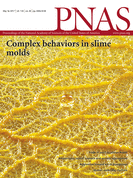Some accidental mistakes have led researchers to issue a long correction to a 2016 PNAS paper.
According to the notice, when the cell biology paper’s corresponding authors became aware of duplications in two images, they immediately notified the journal and the University of Nottingham. After examining the original data archives, the university found that the authors generated the correct images, but the person who prepared the figures selected the wrong images from the data archive.
According to John Atherton, faculty pro-vice-chancellor for the Faculty of Medicine and Health Sciences at the University of Nottingham in the UK, who oversaw the investigation:
…both were clumsy but genuine errors. We’re as sure as we can be that there’s no deliberate fraud going on here.
Atherton explained that the issues came to the attention of the paper’s senior author when a colleague from another university noticed possibly duplicated images within two figures. The senior author then notified the journal and university, prompting an investigation.
Atherton commissioned an expert who wasn’t involved with the study; Atherton and the expert found:
All the images and data were stored on the computer and date-stamped. We could see that the data had not been changed. We also went through all the data to see whether we could reproduce the graphs, and we could.
In one figure, the university found an identical image in two of 18 panels. Atherton noted:
It’s difficult to say how this happened. There were lots of other images stored at the same time, but for some reason, one of the authors selected the same image and put it in two places.
In the second figure, the university identified overlap between two panels, what appeared to be a “drag and drop error.”
The university recommended that:
…corrected figures should be submitted to the journal for peer review
According to the notice:
The corrected figures have been evaluated by the editor and reviewers and approved for publication.
Here’s the detailed correction notice, which includes the corrected figures:
The corresponding authors were recently made aware of errors in Figs. 2 and 3 that required investigation. The journal editor was informed immediately and the University of Nottingham conducted an investigation into the cause(s) of the errors, their implications for the validity of the conclusions of the paper, and whether appropriate corrections could be submitted. This investigation was overseen by a member of the University Executive Board and was independent of the authors. The investigation concluded that the errors were caused by accidental mistakes in the preparation of the figures. The author who prepared the figures selected incorrect images from the data archive. By investigating the original data archives, it was concluded that (1) the correct images were available at the time of figure preparation; (2) the correct images were similar in key features of scientific relevance to the experiments; and (3) the correct images were archived with original filenames that stated the experimental conditions and sample types when cross-referenced to laboratory book records. The investigation concluded that corrected figures should be submitted to the journal for peer review.
“Highly efficient delivery of functional cargoes by the synergistic effect of GAG binding motifs and cell-penetrating peptides” has been cited nine times, according to Clarivate Analytics’ Web of Science, formerly part of Thomson Reuters.
We reached out to corresponding authors James E. Dixon and Kevin M. Shakesheff, both from the Centre of Biomolecular Sciences at the University of Nottingham, and will update the post if we hear back.
Like Retraction Watch? Consider making a tax-deductible contribution to support our growth. You can also follow us on Twitter, like us on Facebook, add us to your RSS reader, sign up on our homepage for an email every time there’s a new post, or subscribe to our new daily digest. Click here to review our Comments Policy. For a sneak peek at what we’re working on, click here.
